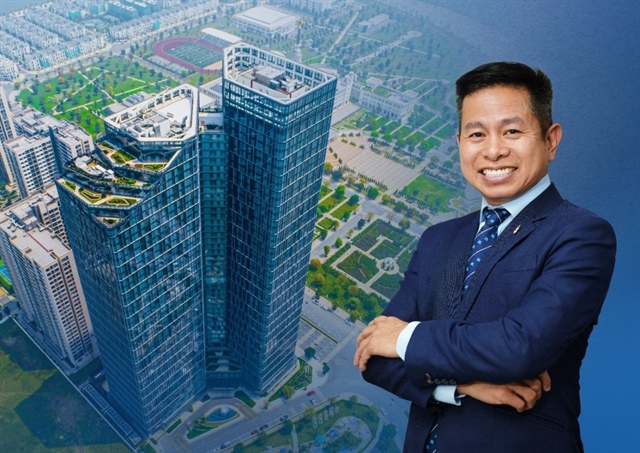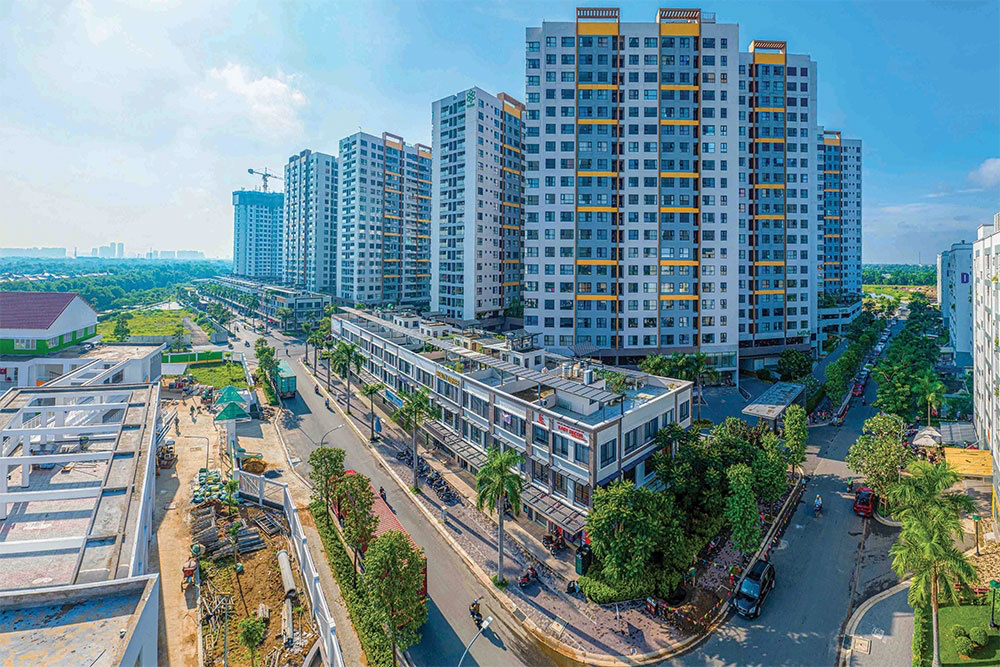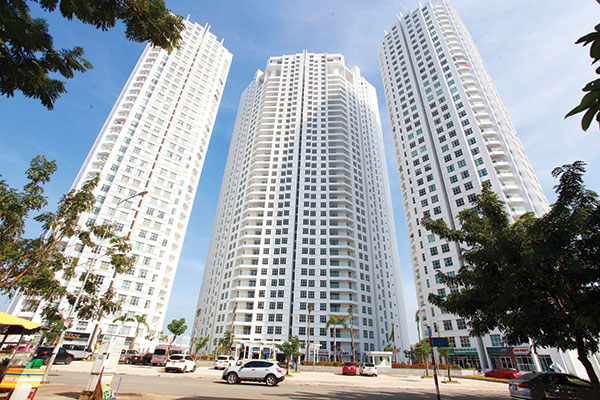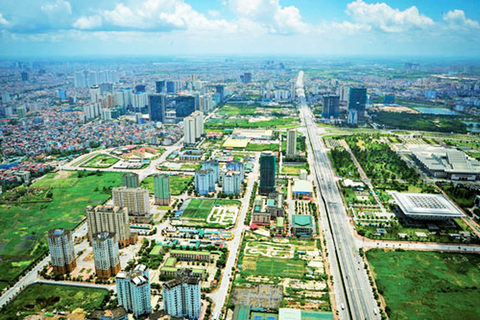Gridlock and disorder in Hanoi’s urban planning
Gridlock and disorder in Hanoi’s urban planning
Hanoi’s urban planning has been constantly disrupted with dozens of apartment buildings sprouting along the streets, badly influencing the city’s appearance and worsening traffic conditions.
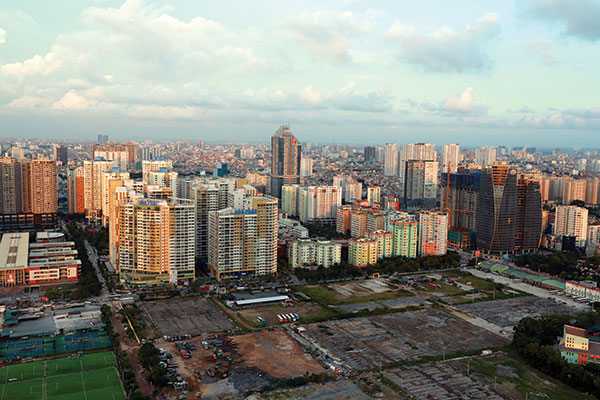
At any time of the day, the intersection of Le Van Luong road connecting Lang road and Khuat Duy Tien street in Thanh Xuan district is always crowded. It may take up to an hour to travel through this one-kilometre stretch due to critical traffic conditions, particularly during peak hours at 7:30-8:30 am and 3-7 pm everyday.
This is because more than 30 apartment buildings, each having 25 to 35 floors, have been popping up along the road, irrespective of the numerous other projects nestled in small road-side alleys.
Most of the buildings came into being in the past five years, after the traffic conditions in the area were improved with the launching of spacious, interconnected roads.
These newest additions include Dai Duong Group’s 21-storey apartment building, Hanoi Urban Development Corporation’s (HUD) 32-storey headquarters, Coma’s 25-storey residential building, Hanoi Housing Development’s 25-storey residential and office building, Vneco Hanoi’s 35-storey apartment tower, and Sunrise’s 25-storey apartment complex, to name but a few.
The population in this area is reported to have reached 100,000 people.
To Huu road shares similar technical parameters as Le Van Luong road (only 40-metre wide). A string of apartment buildings of diverse real estate developers, like Nam Cuong Group, Song Da-Thang Long, Hai Phat Invest, and Bac Ha Group, have either been developed already or are in the pipeline along the road, promising a similar fate as Le Van Luong’s in the not-too-distant future.
Another ‘miserable’ road in the area is Pham Hung which accommodates a raft of major tenement houses and headquarters, such as CEO Group, FLC Group, and Song Da Corporation buildings and the 72-storey Keangnam Hanoi Landmark Tower.
Specifically, major works like the National Convention Centre or My Dinh Bus Station have made the road frequently overloaded, particularly in the rainy season, making transportation very difficult.
Similarly, Nguyen Trai road in Hanoi’s Thanh Xuan district incurs great pressure from a series of urban areas and serviced apartment towers located along the two sides which accommodate hundreds of thousands of residents.
East of Hanoi, Nguyen Huu Tho road is now overrun by residents of Linh Dam Peninsula. It is the only road linking Linh Dam Urban Area, North Linh Dam, and Southwest Linh Dam areas to Giai Phong road. After Muong Thanh Group developed its nine buildings, each consisting of 40 storeys, traffic conditions have reached a critical stage.
More misery in the making
The list of ‘miserable’ roads in the capital will be lengthened on account of a pipeline of projects which are either under construction or now ready for launch.
For instance, the Nguyen Hoang-Ham Nghi street line with a score of projects already or soon to be released, or the Vo Chi Cong road curve stretching from Buoi market to Nhat Tan bridge with tens of on-going real estate projects will be new critical areas for the capital’s traffic infrastructure.
Nguyen Chi Thanh road, once touted as Vietnam’s most beautiful road, has witnessed serious traffic congestions after several major office tower and trade centre projects were finished, while many others are nearing completion.
Residential blocks sprang on road sides heading to the city centre have greatly bothered commuting residents.
In their proposal to the recent meeting of the Hanoi People’s Council, voters have voiced concerns that after several polluted production establishments were removed from the inner city, a number of office towers and urban areas took their place, essentially solving nothing.
Irrationalities in urban planning and management have led to an overly dense urban population and an overloaded transport infrastructure and water draining system in Hanoi, Ho Chi Minh City, and other cities.
Repeated occurrences of lengthy traffic congestions and critical flooding after heavy rainfalls have hindered residents’ living and businesses’ production.
“The constituents and people, particularly in Hanoi and Ho Chi Minh City, wish for the government to take drastic measures in revising city planning, bolstering forecasting capacity, and highlighting local government’s responsibilities in areas where traffic accidents, congestions, and critical floods take place,” a report summarising constituent comments to the 14th National Assembly’s (NA) second session reads.
Tran Thi Quoc Khanh, a Hanoi NA deputy, said that people wanted green trees and entertainment parks to replace production factories in the inner city, however, they got residential blocks instead, causing serious overload.
“We have tried to expand Hanoi’s administrative demarcation to even out population density, but in fact new big works have been developed in the city’s Old Quarter, while the suburbs feature thick construction density,” Khanh said.
Solving the Hanoi puzzle
In light of Hanoi’s master planning to 2030 with vision towards 2050, the Prime Minister has ordered a limit on population density in the central business district (CBD) area, which will be gradually reduced towards 2050. The solution, thereby, is to cap the development of new projects or limit building height. In fact, the number of residential and serviced towers have been skyrocketing.
After each road was opened or upgraded, a string of residential blocks were developed in the surrounding areas, despite the approved planning. The developers raced to ask for planning revisions to accommodate more residents and heighten their buildings for profit, while neglecting other factors, such as transport infrastructure or public utilities to serve residents.
Mo Lao New Urban Area in Hanoi’s Hadong district is an example. Decision No.738 of the former Ha Tay People’s Committee dated April 28, 2006, authorised the placement of more than 15,540 residents on a 62.26-hectare area. However, the area’s planning was constantly revised later on to accommodate more housing area and reduced transport infrastructure construction.
Until now, Mo Lao New Urban Area has undergone 23 planning revisions, increasing the construction area and population scale to over 47,680 residents.
According to Pham Sy Liem, deputy chairman of the Vietnam Federation of Civil Engineering Associations (VFCEA), problems persist with the licensing of new public utilities in urban areas.
“The population has grown sharply, whereas associated technical infrastructure, such as schools, hospitals, and markets, have yet to be expanded. Traffic congestions are inevitable,” said architect Dao Ngoc Nghiem, deputy chairman of the Hanoi Urban Planning and Development Association.
Nghiem added that the general planning could only be revised when there were changes in the socio-economic development goals.
“Hanoi’s general planning was approved in 2011. District-level planning was in place by the end of 2015. Planning revisions may be considered and approved, but it must fit Hanoi’s district and city planning. All other planning schemes must be checked,” Nghiem said.
Under the current laws, if the population was revised in an upward direction, the social infrastructure must also be increased proportionally. In addition, when the planning is revised, it must seek consultation from not only relevant management agencies, but also the public.
VFCEA chairman Tran Ngoc Hung assumed that the ask-and-give mechanism has led to overload in residential block planning. District and city leaders must be held accountable.
To tackle the conundrum, one of 10 measures the Hanoi People’s Committee presented relates to construction planning management. Accordingly, in the upcoming years the city will keep a close eye on the construction of high buildings and physical migration to the city inner.
In addition, efforts will be geared towards pushing up the pace of removing polluting manufacturing factories, schools, and hospitals from the inner city and dedicate the land for public utilities. This aims to prevent Hanoi from turning into a ‘huge parking lot’ during rush hours.


